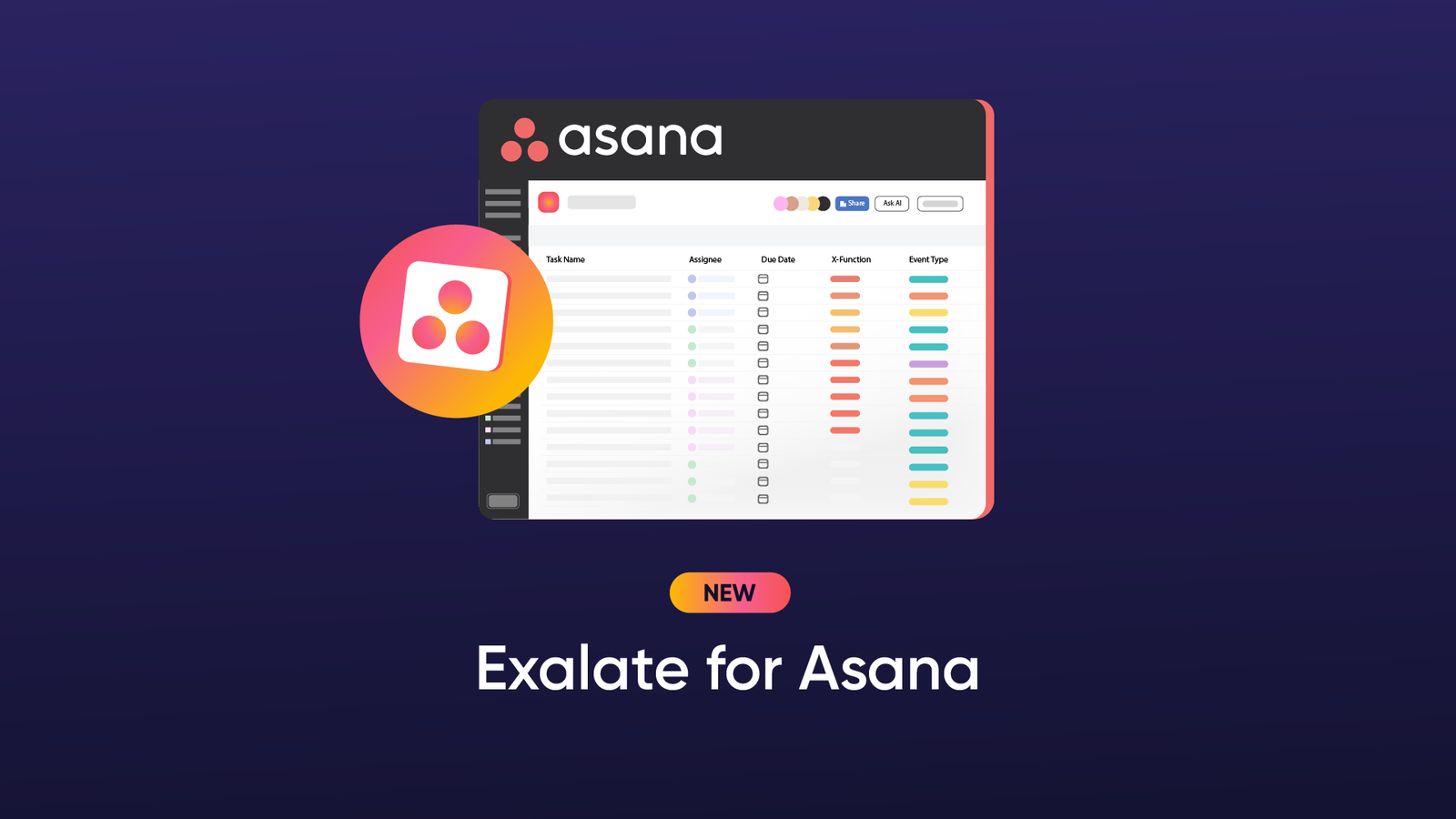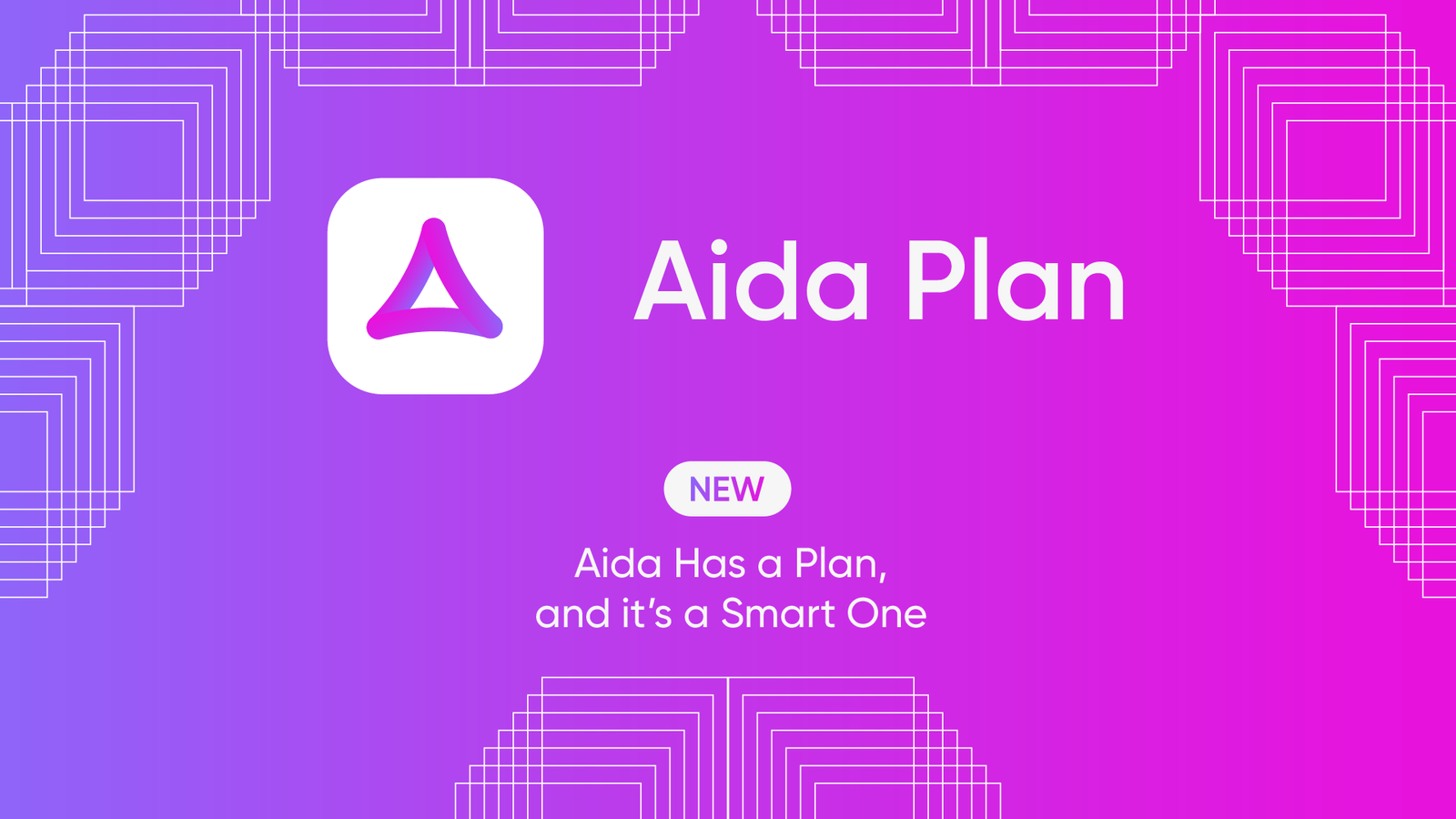Workflow orchestration helps businesses automate and manage their tasks across different systems and teams. It ensures that every step in a process happens in the right order, making workflows more efficient and consistent from start to finish.
In this blog, we’ll explore what workflow orchestration is, its key benefits, and how it enhances business processes.
We’ll also understand how the right tools can help you streamline and manage complex workflows effectively.
What is Workflow Orchestration?
Workflow orchestration is the process of integrating, coordinating, and managing multiple automated steps across diverse systems to achieve an end-to-end execution of complex business workflows.
Let’s rewind a little and know what workflows are.
A workflow is a series of steps or tasks required to complete a specific process or project. In a business context, workflows represent sequences of tasks designed to achieve specific objectives, efficiently and consistently.
Business workflows often span multiple tools, teams, systems, and even companies. These workflows range from simple automation, such as firing a notification alert when a customer raises an urgent request, to intricate processes involving numerous steps across different platforms.
Workflow automation refers to the act of automating repetitive steps within a single workflow. However, workflow orchestration takes this a step further.
It dynamically determines the sequence of tasks to ensure optimal output. It schedules and chains tasks together, enabling an automatic response to events in a logical, efficient manner.
Key Definitions
- Workflow: A process involving two or more steps.
- Workflow Orchestration: The integration of automated tasks or complex workflows across tools, systems, organizations, and teams.
When understanding workflow orchestration, it’s important to know the nuances of workflow automation.

What is the Difference Between Workflow Orchestration and Workflow Automation?
While workflow automation focuses on automating individual tasks, workflow orchestration manages the sequence and interaction of these tasks to create a cohesive, unified process.
Think of it this way:
- Workflow Automation is like setting up a simple alarm clock to wake you up at a fixed time every day—it performs a single function repeatedly without needing further intervention.
- Workflow Orchestration is akin to organizing an entire day’s schedule: coordinating your alarm with breakfast preparation, planning your commute, scheduling meetings, and adjusting dynamically if an unforeseen event (like traffic) disrupts your plan.
Workflow orchestration is also often compared with other terms like process orchestration and data orchestration.
Let’s quickly dig into the subtle differences between these terms.
What is the Difference Between Workflow Orchestration and Process Orchestration?
Workflow orchestration focuses on automating and coordinating specific tasks or jobs within a defined sequence, often in technical domains like IT operations or data pipelines.
In contrast, process orchestration manages entire end-to-end business processes, integrating systems, workflows, and human tasks to achieve broader organizational goals.
Workflow orchestration is granular and technical, while process orchestration is holistic and business-oriented.
What is the Difference Between Workflow Orchestration and Data Orchestration?
Workflow and data orchestration both aim to improve efficiency, but they focus on different areas.
Here’s a breakdown:
Workflow orchestration manages the sequence of tasks in a process, ensuring each step is completed in the right order from start to finish.
Data orchestration focuses on the movement and transformation of data across different systems. It ensures data is available where and when it’s needed, involving tasks like ETL (Extract, Transform, Load) and synchronization across various data sources.
While workflow orchestration handles task management, data orchestration deals with the flow of data. They can overlap, especially in data-heavy workflows where managing data is crucial to the process.
Benefits of Workflow Orchestration
There are a lot of benefits your company can experience with the right workflow orchestration in place.
Increased Efficiency
Streamlined orchestrated workflows will reduce manual intervention in all business areas. This increases operational efficiency by automating and sequencing tasks across everyday tools.
Improved Accuracy
When manual interventions stop, manual errors stop too. All business workflows continue according to predefined sequences, maintaining accuracy and consistency in task execution.
Scalability
Complex workflows often stretch across multiple environments, evolving as systems and team needs change.
For example, consider orchestrating a software development workflow between Jira and Azure DevOps. In this scenario, the project management team uses Jira, while the development and QA teams rely on Azure DevOps. If the QA team later transitions to a separate Jira instance, scaling the workflow to include Jira, Azure DevOps, and the new Jira requires an orchestration tool capable of managing such complexity with ease.
Another instance is when the data volume or transactions between two integrated workflows increases exponentially. An orchestrator should be able to handle such large-scale data transactions without additional overhead or complications.
Enhanced Visibility
Workflow orchestration ensures your teams will always have clear views of their workflows, making them observable and debuggable. It would also offer monitoring and reporting features for better oversight.
Implementing workflow orchestration requires careful planning and the right tool.

Workflow Orchestration Tools
Workflow orchestration tools are software solutions designed to manage, coordinate, and integrate complex workflows across multiple systems, teams, and processes.
Key Features of Workflow Orchestration Tools
- Task Automation: Automate repetitive tasks to save time and reduce manual errors.
- Integration Capabilities: Seamlessly connect various systems, APIs, and platforms.
- Scheduling and Triggering: Schedule workflows or trigger them based on specific events or conditions.
- Observability: Monitor workflows in real-time, track progress, and debug issues.
- Scalability: Handle increasing workloads and adapt to complex, evolving processes.
How to Choose the Right Workflow Orchestration Tool?
Security
Security is a non-negotiable aspect of orchestrated workflows. As data moves between multiple systems during orchestration, it’s critical to ensure it reaches the right destination and remains accessible only to authorized individuals.
A decentralized workflow orchestration setup can address many security challenges. In this setup, each system or team can independently decide whether to include or exclude specific data during workflow orchestration. This prevents accidental sharing of sensitive information with unintended parties.
Additionally, prioritize tools that implement robust security measures, such as encryption for data exchange, secure transfer protocols, and strict compliance with industry standards. Evaluate the tool’s overall security posture, including its adherence to best practices and certifications, to make an informed choice.

Flexibility
Simple automation tools do not work for orchestrating complex workflows. Flexible workflow orchestration tools will ensure you can integrate for advanced scenarios. For instance, a simple status update in one system leads to simultaneous real-time status updates in multiple systems all at once.
Scalability
Businesses evolve—workloads shift, requirements change, and the scope of workflows to be orchestrated grows. To stay ahead, choose an orchestration tool that is built to adapt and handle both your organization’s current needs and future workload demands.
Popular Workflow Orchestration Tools
Several tools are available on the market, each offering different features based on business needs. Here are a few examples:
- Exalate: This tool provides a decentralized approach to workflow orchestration. It’s particularly useful for managing workflows that span multiple companies or departments, allowing each party to control what data is shared. Exalate also features an AI-powered scripting engine for customizing workflows based on specific requirements.
- Apache Airflow: Often used for managing data pipelines, Airflow helps orchestrate complex workflows, especially in the data science and analytics domains. It offers powerful scheduling capabilities and integrates well with various tools in the cloud.
- Zapier: Ideal for businesses that require simple, no-code solutions, Zapier automates workflows by connecting thousands of apps. While it may not have the advanced features of larger orchestration tools, it offers an easy way to integrate and automate everyday tasks.
Let’s dig a little more into Exalate as a workflow orchestration tool.
Exalate: A Workflow Orchestration Tool
Exalate is an advanced workflow orchestration tool that supports decentralized integration. It is the ideal setup when you want to orchestrate workflows across companies where each company has independent control over data exchange.
Exalate also has an intuitive AI-powered Groovy-based scripting engine that is perfect for intricate workflows. You can set it up any way you want, using conditional logic or advanced data mappings, there’s a place for every workflow.
Let’s discuss some practical workflow orchestration examples.
Workflow Orchestration Examples
Customer Support to Software Development Escalation
Below is an example outlining how an e-commerce company automates critical incident resolution through workflow orchestration.
Step 1: Incident Creation (Trigger Event)
- People Involved: Customer (e-commerce company), Support Team
- Scenario: A critical security vulnerability is discovered in the payment processing system. An incident with urgency = 1 is raised in ServiceNow.
- Action: This triggers a Jira Bug (issue type) of the Highest priority for the development team.
- Outcome: The bug is assigned to John, a developer, working in Jira.
Step 2: Development Begins
- People Involved: John (Developer), ServiceNow Agent
- Scenario: John starts working on the Jira bug and changes the status to “In Progress.”
- Trigger: ServiceNow incident status automatically updates to “In Progress.”
- Interaction: John requests additional details by adding a comment, which is reflected as a ServiceNow work note. The ServiceNow agent sends all the relevant details.
- Outcome: John has the information needed to continue working on the critical bug.
Step 3: Immediate Patch and Validation
- People Involved: John (Developer), Anna (QA Specialist)
- Scenario: Since it’s a critical issue, the bug must be patched to production within 2 hours.
- Action: John fixes the bug, changes the Jira status to “In Review,” and comments “The bug is resolved.”
- Integration:
- A trigger is generated. The issue is reflected as a Task (work item) in Azure DevOps. A comment is added to the work item: “The bug is ready for validation”.
- A comment is added to the ServiceNow incident: “The bug is with the QA team.”
- Outcome: The “Assigned to” field in Azure DevOps automatically reflects Anna (QA Specialist).
Step 4: QA Validation
- People Involved: Anna (QA Specialist), John (Developer)
- Scenario: Anna begins testing by changing the Azure DevOps work item status to “Active.”
- Action: A comment “Testing begins” is automatically added to John’s Jira issue and the ServiceNow incident.
- Outcome: QA progresses with all relevant details synchronized.
Step 5: Release Preparation
- People Involved: Anna (QA Specialist), George (Release Manager)
- Scenario: After QA validation, the issue is prepared for release.
- Action: Anna marks the Azure DevOps work item as “Resolved” and comments: “Fix has been validated.”
- Integration:
- A new Jira issue is created for George (Release Manager) with all relevant details.
- Comments are synced across John’s Jira issue and the ServiceNow incident.
- Outcome: The release manager has everything needed to patch the fix.
Step 6: Release and Closure
- People Involved: George (Release Manager), ServiceNow Team
- Scenario: George patches the fix into production.
- Action: George marks the Jira issue in his instance as “Done.”
- Integration:
- The Azure DevOps work item status changes to “Closed.”
- John’s Jira issue status updates to “Done.”
- A final work note is added to the ServiceNow incident: “The fix is now in production.”
- Outcome: The incident is resolved, and all systems reflect the updated statuses.

Benefits of Workflow Orchestration in This Use Case
- Efficiency: Ensures seamless transitions between systems and roles.
- Accuracy: Automatically updates statuses and synchronizes comments.
- Transparency: Provides clear communication across teams and everyone involved has a transparent picture of the incident.
- Speed: Improves resolution time or SLA for critical issues.
Multi-Level Support Escalation Workflow
This use case demonstrates how an orchestration can adapt to meet varying levels of customer support workflow.
For example:
- Incident Creation: Customer reports a ticket in Zendesk.
- L1 Troubleshooting: The L1 team attempts to resolve the ticket, if unresolved, they escalate it to L2.
L2 engineers work in Jira. Fields like ticket status, priority, company name, and comments are synced. - L2 Escalation: L2 takes over the issue, updates the status, and synchronizes comments or internal notes across Jira and Zendesk.
- L2 Resolution or Escalation to L3: If L2 cannot resolve, the issue is escalated to L3, maybe using ServiceNow. Assignee and escalation status are updated in both systems.
- L3 Resolution: L3 resolves the ticket, updates the incident status, and adds resolution details in all integrated systems.
- Incident Closure: The issue is resolved in all systems, and final comments and statuses are synchronized.
Optimize Customer-facing Workflows for MSPs Through Orchestration
Managed Service Providers (MSPs) can significantly benefit from workflow orchestration by integrating their systems with those of their customers, creating a continuous flow of information across diverse platforms.
This integration allows MSPs to automatically capture incidents, track development progress, or escalate issues as needed, all in real-time.
By connecting systems like ServiceNow, Jira, Salesforce, Freshdesk, etc. MSPs can automate support workflows, improve response times, and ensure that all parties—internal teams and customers—are always updated with the latest status.
Explore how SPK and Associates, an MSP, uses Exalate to onboard new customers and streamline its operations.
SPK’s approach can be highly beneficial for all outsourcing needs, as it enables service providers to manage external teams and resources effectively, ensuring smooth collaboration and the efficient handling of tasks, no matter where the service is being provided.
Here is a sample example of workflow orchestration that implements the following scenario:
When a Jira ticket has the Highest Priority and is in the Escalated status, add a comment to the Salesforce Case, saying “Something is burning” and change the Case priority to High. Otherwise, change the Case priority to Low.
How to Implement Workflow Orchestration
Workflow orchestration needs to be considered as a project and detailing the steps is important.
Every company’s needs and workflows are different, but the usual recommendation is as follows.
- Understand and define the workflow you want to orchestrate end-to-end. Ensure you identify the entry and exit data points in all the systems you want to integrate. Identify key tasks, dependencies, mappings, conditions, and triggers. Choose what needs to be included or excluded from being exchanged.
- Decide a workflow orchestration tool based on your use case and company requirements.
- Make sure your workflow is communicated clearly to the orchestrator. Design and define your process flows. Define triggers and error-handling mechanisms in every system.
- Orchestrate a simple workflow and then scale it in a controlled and consistent manner. Keep testing for expected outcomes. Gradually deploy them in production.
- Regularly monitor your workflows to ensure everything runs smoothly.
Get Started With Workflow Orchestration
Workflow orchestration is indispensable for businesses that aim to achieve a complete digital transformation and increase operational excellence.
By automating, integrating, and orchestrating complex workflows, organizations can reduce manual errors, and scale their daily operations effortlessly.
Tools like Exalate can help you orchestrate workflows from start to finish. With its AI-assisted scripting engine, integrating workflows is really simple.
Whether you’re managing IT infrastructure, outsourcing software development, processing data pipelines, or handling customer support, tools like Exalate offer a structured approach to achieving seamless process management.
Discuss your workflow in detail with an integration engineer and get started!
Recommended Reading:
- How to Get the Most out of Your Workflow Integration
- The Reality of Business Process Integration
- How to Implement Enterprise Applications Integration Between Systems
- Jira ServiceNow Integration: How to Connect Jira and ServiceNow in 6 Steps
- Jira Azure DevOps Integration: The Complete Step-by-Step Guide
- ITSM Integration: Simplify Your IT Services Like Never Before
- B2B Integration: The Comprehensive Guide



